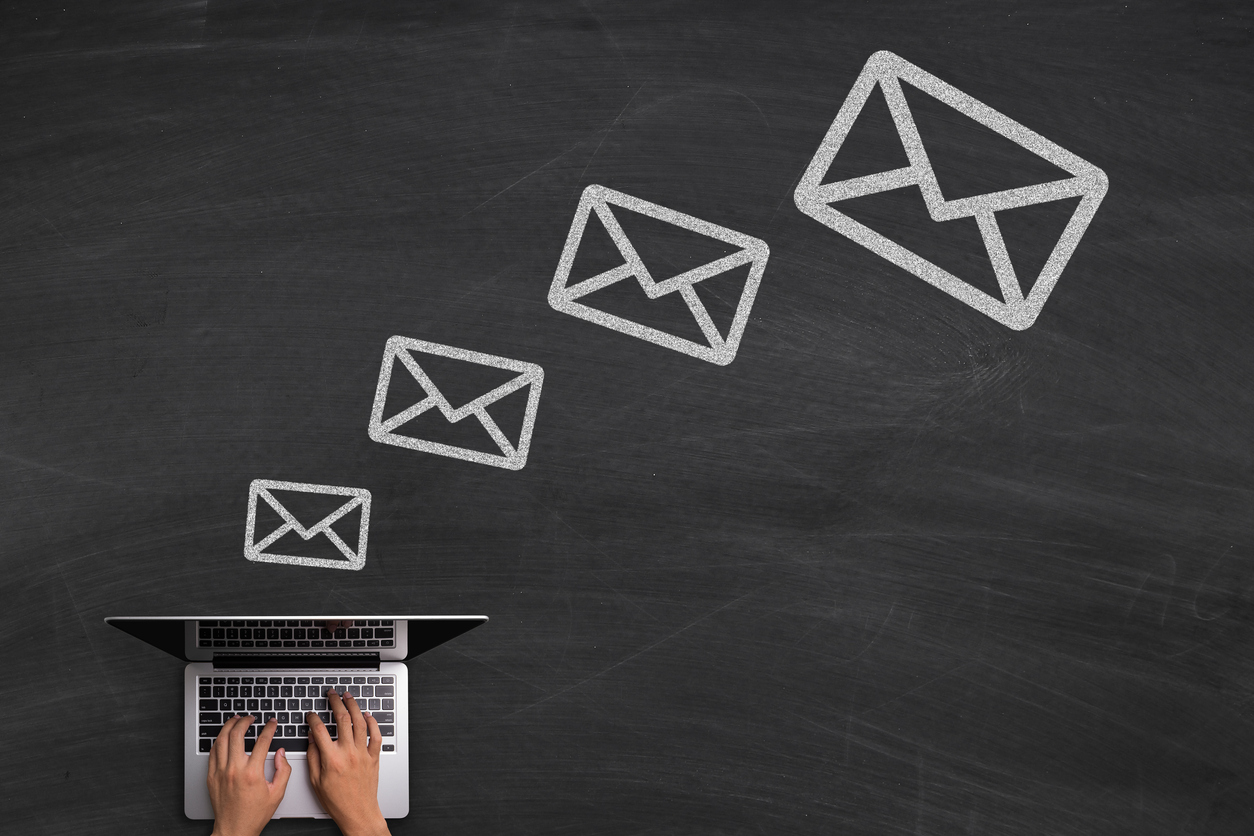Email campaigns can create a lot of interest and business regarding your products or services. However, for small to medium size businesses that don’t have professional design or copy writing talents on staff, crafting well designed and written emails can be a daunting task. Knowing where to insert your information, what to use as a subject line to grab attention, and whether a call-to-action (CTA) is important are all critical to a successful email marketing campaign. When planning and developing your ongoing email campaigns, here are some tips to keep in mind to make the task less daunting:
Keep it Simple
In email marketing, simplicity is key. When people open emails, they’re looking for a quick bit of information that explains why they should be interested in your products or services. Your emails don’t need to be flashy or complicated; just get straight to the point and capture the interest of your potential clients from the start.
A simple header with your company’s logo is great for catching an email readers’ attention, and it allows for continuity throughout ongoing email campaigns. Customers will know who you are if you include the same header in all your emails. Including icons that link to your company’s social media pages (Facebook, Twitter, Instagram, etc.) will blend your email campaign with the rest of your online presence, and create a seamless experience for customers.
Don’t go wild with colors; select a simple border or background that matches with the colors of your logo to keep a reader interested but not overwhelmed. Use images sparingly and only as necessary to complement the text of your email. Using too many images can make it difficult for readers to really see the point in your email campaign, and lots of images can easily turn into a jumbled and confusing mess when your email is opened.
Content
When determining the content for ongoing email campaigns, consult with your sales team to figure out the most frequently asked questions they receive. Prepare an email that answers each of these questions on its own, but that works with your other emails to create a coherent, consistent experience for readers and that builds interest in your company’s products and services. Explain who you are, what you do, why you do it, and how it works.
Use the email’s subject line to pose the question, then the body of the email to answer the question. Your email should be short, sweet, and straight to the point, but also interesting enough to catch your readers’ attention and draw them to your social media platforms, webpage, or sales information.
A well-placed CTA can work wonders in an email marketing campaign. After attracting the attention of your customers, invite them to learn more, to contact you, or to place an order, whichever best suits your company’s services. Don’t just tell them to visit your website; include a link to make your CTA seamless, simple, and accessible.
Timing
Developing an ongoing email marketing campaign requires some planning and preparation to determine the proper timing. A study by CoSchedule that compiled the findings of 10 studies claims that Tuesdays are the best day of the week to send out emails, followed by Thursday in campaigns that send two emails per week. Studies also showed high click-through rates on Saturdays and Sundays, but fewer businesses send emails over the weekend. Depending on your company’s services, consider sending your emails on the weekends to take advantage of lower traffic in your clients’ inboxes.
Finding the right time throughout the day to send emails is a little trickier. CoSchedule’s study found that 10 a.m. emails yield the best results, as people are already awake and starting on their days. 8 p.m. is also a good time to catch people before they go to bed, and 2 p.m. works well for attracting customers who may be slowing down in their work and looking for a distraction.
Of course, all businesses and their customers are different. Perhaps your audience is solely night-owls, who are more likely to open and click through an email sent at or after midnight. Maybe they’re more apt to interact with emails that arrive at 6 a.m., as they’re waking up. You’ll have to determine the best timing for your individual needs, but the studies above provide a great framework for starting out.
Analysis
When implementing ongoing email campaigns, analysis is important to determine what works and what doesn’t. If clients are not interested in your emails, continuing to send them becomes useless, and potentially annoying to customers. Keep track of the emails you send out and the success rates they create in drawing clients to your website and social media platforms. Figure out what design aspects, colors, and information yield the most results, and adjust your campaign to boost these results. Analysis will also allow you to determine the days and times that more clients interact with your emails, and allow you to adapt your timing accordingly.
With SalesNexus, planning, sending, and tracking your email marketing campaign has never been simpler. Automate, send mass emails, implement templates, and track success with analytics all in one easy-to-use interface. Contact us today for more information!

